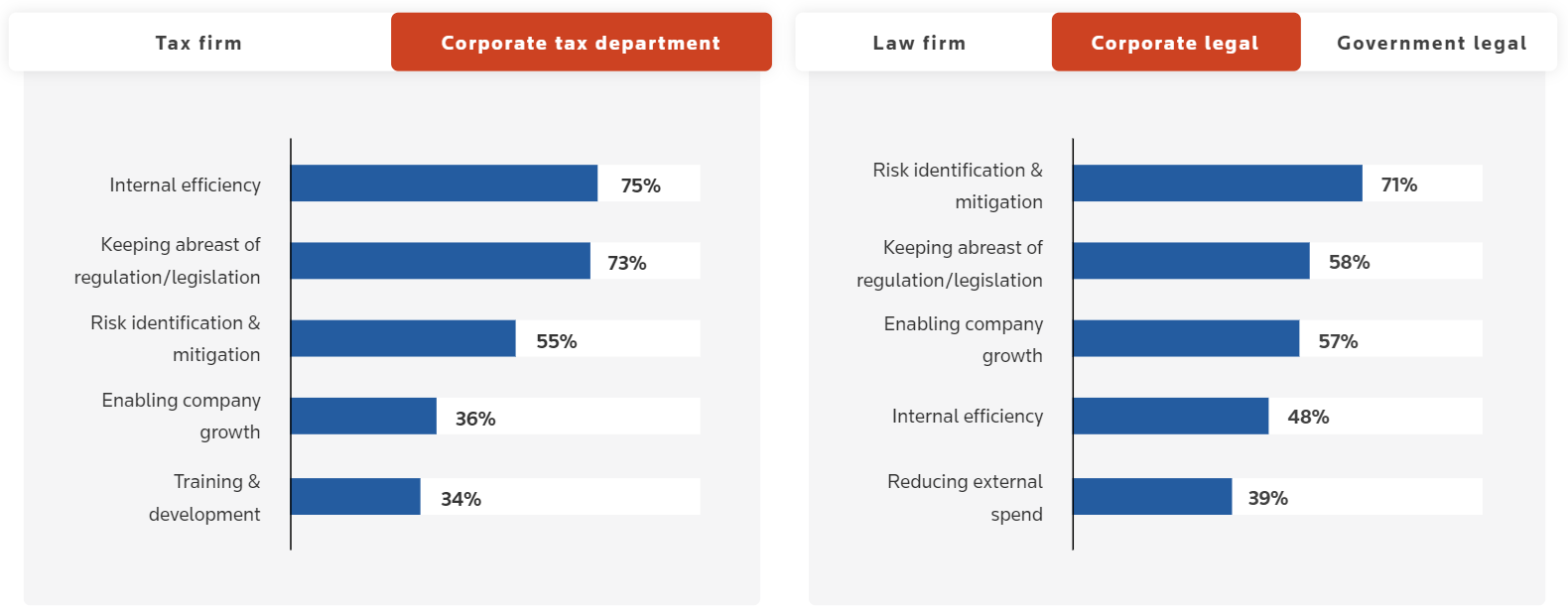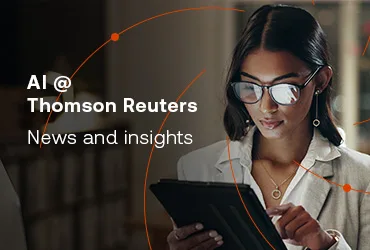Unlock the potential of artificial intelligence as a guardian for your business, as we unveil key findings of a survey from professionals, shedding light on how AI not only protects but also propels organizations in an ever-evolving landscape
Jump to:
| AI and keeping up with regulation |
| AI and identifying risks |
| AI and detecting fraud |
While AI continues to instill fear in some, many others have agreed it is here to stay. If you are starting to measure the capabilities of how AI can protect your business and add value to your organization, we have put together some of the top reasons revealed by professionals in a recent Thomson Reuters (TR) survey. Details can be found in our Future of Professionals report. The report covers the responses of 1,200 professionals from North America, South America, and the UK.
Throughout the process, Thomson Reuters uncovered trends in how AI is protecting organizations and government agencies that are particularly risk-prone to errors. Law enforcement agencies, Medicaid, financial institutions, child support programs, law firms, tax agencies, and government organizations are all prime candidates for leveraging the power of AI to safeguard their business.
Our journey with AI began 30 years ago when Thomson Reuters began providing commercial applications for natural language processing searches. We have carried forward a legacy of leveraging new technological capabilities and developing them into cutting-edge performance tools to support our customers. We have been at the forefront of AI adoption for decades. Here are some key learnings on how AI can protect your business.
 | Future of Professionals ReportHow AI is the Catalyst for Transforming Every Aspect of Work
|
AI and keeping up with regulation
Highly regulated industries can face regulations at multiple levels of organization, government, or geography, and have historically engaged dedicated experts and compliance teams. This model is becoming an increasing challenge both in terms of availability and cost. Introducing AI into workflows can alleviate some of these challenges by providing a more cost-effective option for the updating and management of regulatory and compliance information. It is also a resource that is not affected by the same time restrictions and physical limitations of people.
Regulations and compliance frameworks are continuously being introduced and updated in a multitude of industries, including AI. Organizations found to be out of compliance or in violation could not only inflict damage on their customers but will likely incur fines, possibly into the hundreds of thousands, even millions, of dollars. Consequently, even if an organization is slightly suspicious of incorporating AI, there is little argument that can be made against why deploying AI as a tool for keeping up with regulatory changes is going to add a lot of value. With AI, there needs to be trust, authenticity, and transparency.
While you are looking at how AI can protect your business by keeping you current on industry regulations, it will also be keeping you updated on regulations in its industry. The European Union, United States, United Kingdom, and others are developing large-scale regulatory frameworks to bring “increased compliance obligations for any company that leverages AI”. Essentially, an AI benefit is that it updates your organization on AI regulations.
AI and identifying risks
Beyond preventing the risk of non-compliance and regulatory fines, AI is helping organizations improve their decision-making capabilities. AI inherently can process huge quantities of data and analytics. In our Future of Professionals (FOP) report, risk identification and mitigation were among the top three reasons corporations and government departments cited for adopting AI to help protect the business.

With “growing the business” and “expanding into new markets” listed as top priorities for firms and departments, being able to produce risk assessments using AI models will greatly improve the probability of growth and success while reducing the time and effort required to reach the best strategy.
Another aspect of how AI can protect your business is through the infusion of AI-powered tools into governance, risk, and compliance (GRC) software which will offer continuous improvements in risk identification and assessment. This has the power to accelerate cost-savings and informed decision-making.
AI and detecting fraud
Respondents to the survey, covered in the FOP report, believe that AI can help protect businesses by enhancing their fraud prevention and detection abilities. This can be a bit of a double-edged sword. As the quality of AI output is only as good as the quality of AI input, there is a risk that AI helps fraudsters execute scams because of the collective training AI is receiving. As reported in an article about Generative AI and its impact on corporate compliance, we can expect to see the following:
- more persuasive phishing emails;
- more convincing impersonators scamming for information by phone;
- fake ChatGPT (or similar) browser extensions and apps;
- malware created by ChatGPT (or similar tools); and
- data breaches that threaten the release of personally identifiable information
Consequently, using AI to help protect your business by detecting fraudulent or suspicious activity, with its ability for real-time monitoring across multiple data sets and advanced analytics, will likely be a necessity.
There has been a lot of talk and exploring AI use cases, but little has been done in the way of formal internal policy creation on the use and application of AI. However, the U.S. federal government presents an approach worth considering. Having adopted the AI Training Act in October 2022, they communicated that agencies should embrace “fail fast, learn quick” but avoid disclosing their internal AI tools as a fraud prevention measure.
With these types of technologies, there are always inherent risks. Highly regulated industries that are susceptible to human error and oversight may see no other alternative than to leverage AI to help protect their business. For more information, we invite you to explore our Future of Professionals report.
View the interactive infographic |
|











